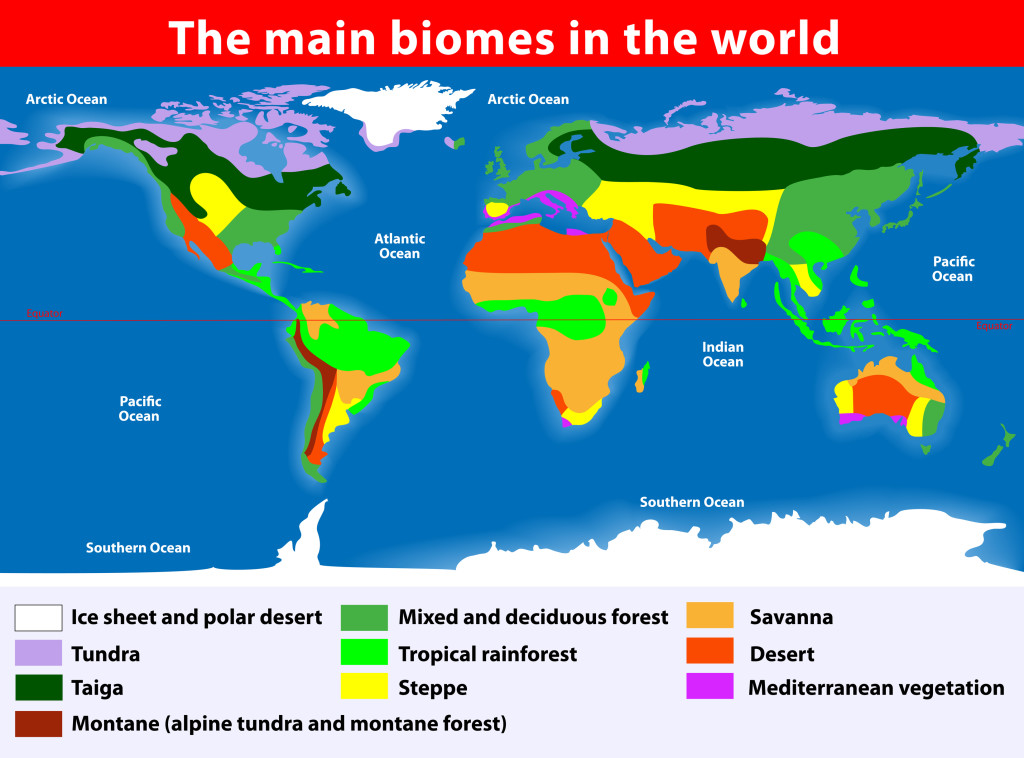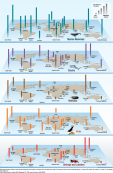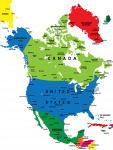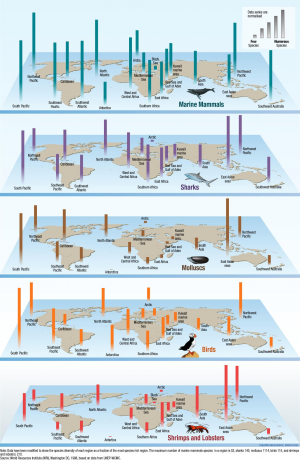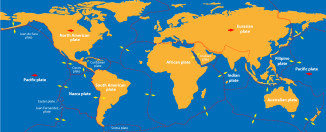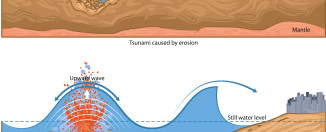World Biomes
Biomes are parts of the earth that share similar climates, vegetation, and animal life. They are zones that may be found on several different continents but which would look, feel, and even sound similar to visitors. Experts disagree on how many biomes we should divide the earth into, however our map shows some of the main biomes that many people agree on.
Ice sheet and polar desert –land covered in ice and snow or ice sheets, average temperatures below freezing, very low amounts of snowfall; very little or no vegetation; warm-blooded, cold-weather tolerant animals.
Tundra – areas in which the soil is frozen for part of the year and temperatures are generally cold, with low precipitation; short, dwarf trees and low-lying vegetation; some cold-tolerant animal life.
Taiga (boreal forest) – the world’s biggest biome, with low precipitation and extreme annual temperature variation; mostly evergreen conifer forest; large variety of animal life.
Montane (alpine tundra and montane forest) – high altitudes, strong winds and poor soils; stunted tree growth, short grasses and bushes; little variety of animal life.
Mixed and deciduous forest – temperate climate, moderate annual precipitation, deep soil development; deciduous and coniferous trees, ample undergrowth; large variety of animal life and developed ecosystems.
Tropical forest – hot climates with above average precipitation; most diverse plant life with multi-level forest canopy; most diverse animal life with land and canopy dwelling creatures.
Steppe – cold or sub-tropical climate with deep soil formation and below average precipitation; extensive grasslands with few trees; grazing and grassland animal life.
Savanna – warm to hot climate with highly seasonal rainfall; grassland and spaced trees with no canopy cover; dominated by gazing animals.
Desert – hot with extreme temperature variation, poor soil development, very little precipitation; very little plant life, drought-resistant; few heat and drought-resistant, small and nocturnal species.
Mediterranean vegetation – warm climate, seasonal precipitation, fire-prone; low trees and grass cover, fire-resistant species; small and nocturnal species

